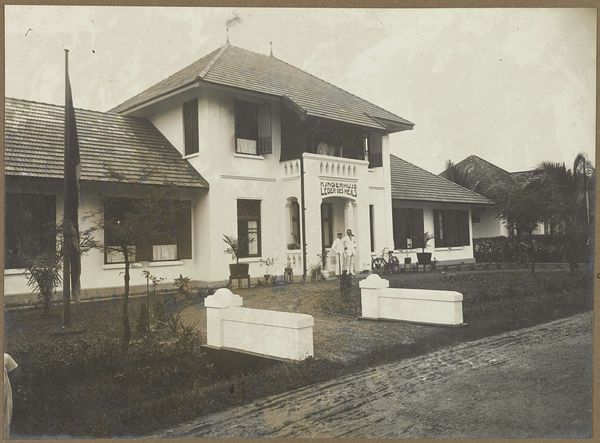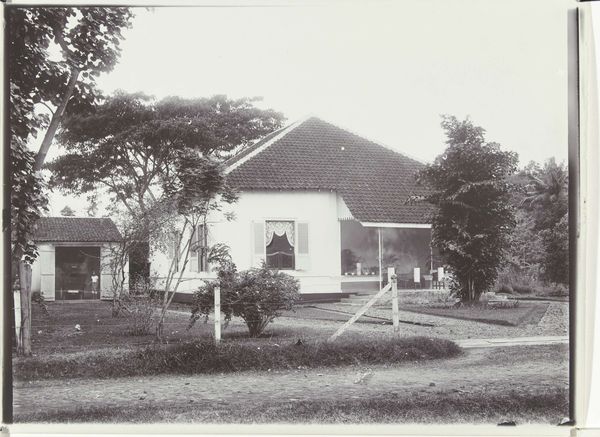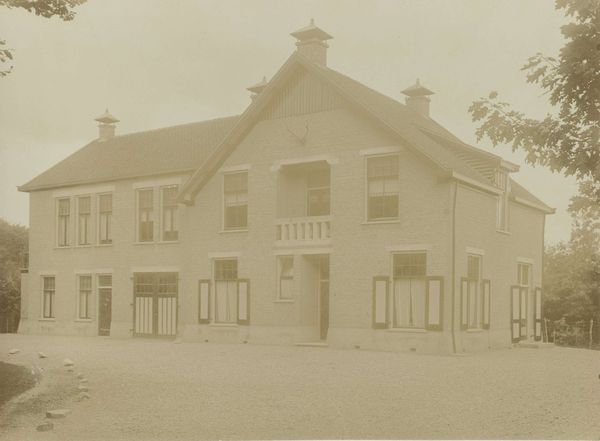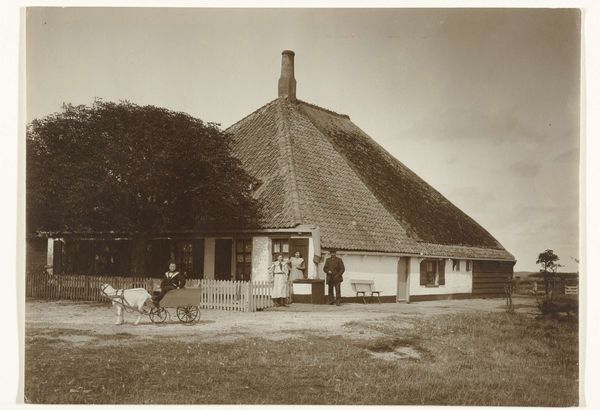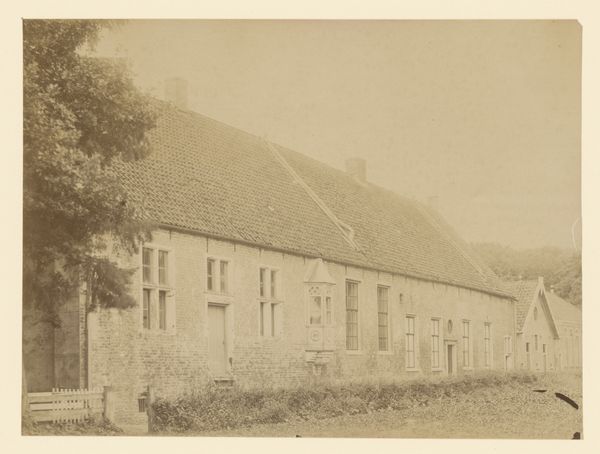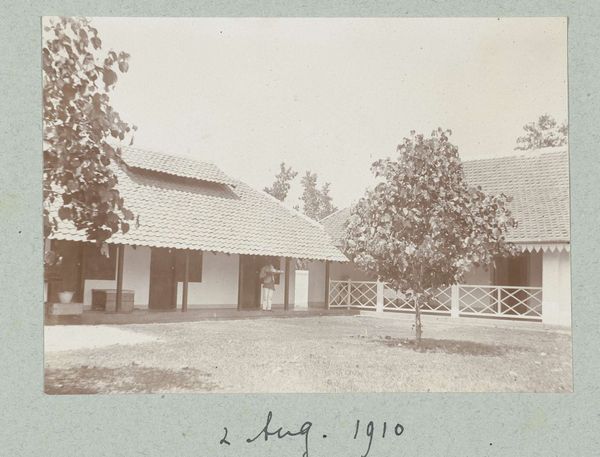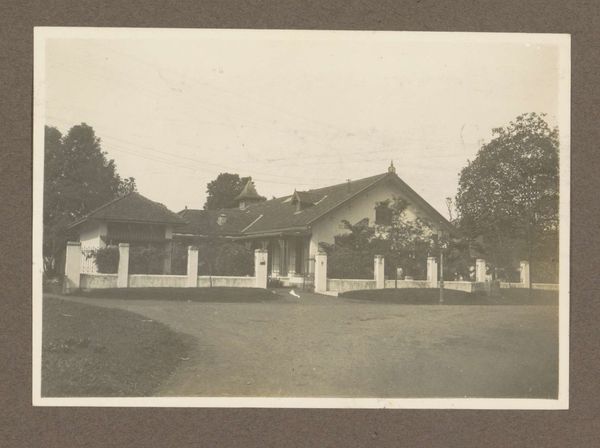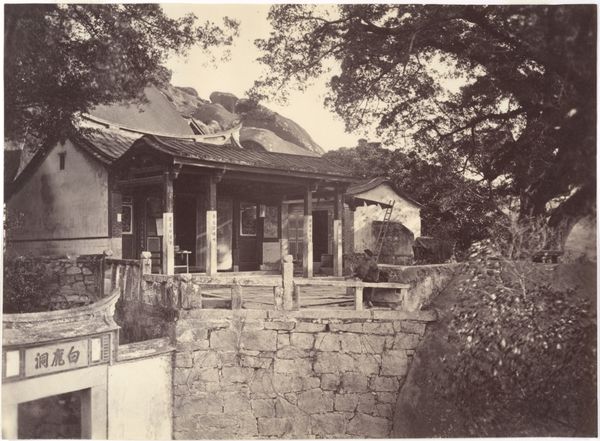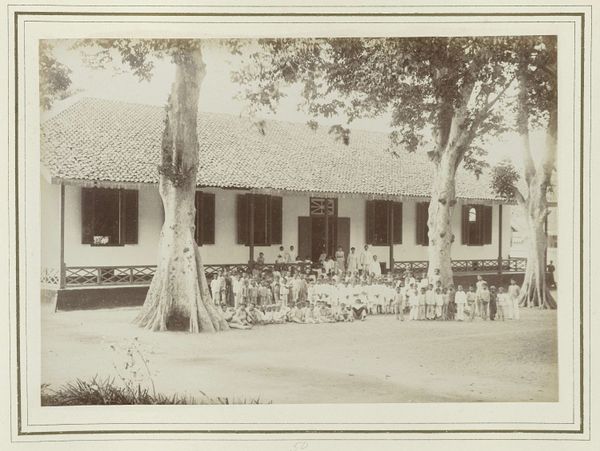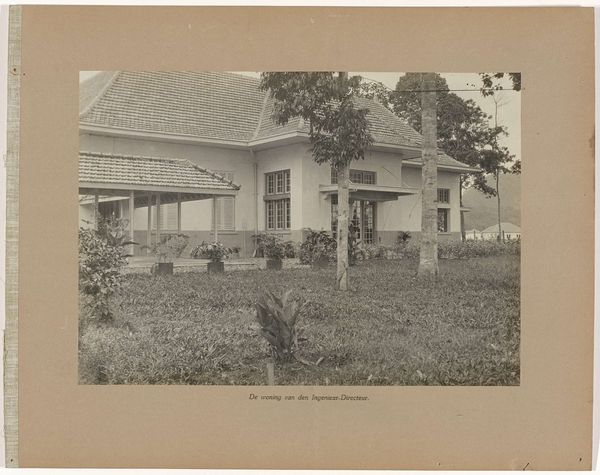
print, photography, architecture
#
dutch-golden-age
# print
#
landscape
#
historic architecture
#
photography
#
historical photography
#
cityscape
#
architecture
Dimensions: height 17 cm, width 23 cm
Copyright: Rijks Museum: Open Domain
Editor: Here we have "Nederlandse gebouwen in Batavia," which roughly translates to Dutch Buildings in Batavia, dating to around 1900, from the Oudheidkundige Dienst. It’s a black and white photograph, presenting what seems to be colonial-era architecture. What immediately strikes me is how the photograph’s tones emphasize the stark uniformity, yet each building also reveals its age. What stands out to you? Curator: Well, let’s not be seduced by surface appearances, shall we? To truly *see* this image, we must consider the labor embedded within its materiality and social context. It's photography, but also *architecture*. Who laid these bricks, and under what conditions? What materials—from the clay of the tiles to the paint on the walls—were available, and what social relations made them so? Consider the relationship between the Netherlands and Batavia; whose resources are displayed here? Editor: So, you're less interested in the aesthetic qualities of the photograph itself, and more with what went into making these buildings as an indicator of material availability in Dutch-colonized Indonesia. Do you think this colonial architecture’s "Dutch Golden Age" style reflected a deliberate intent of material excess to portray dominance? Curator: Precisely. The visual composition becomes secondary to the power structures manifest in resource extraction and the subsequent construction. The choice of style becomes a conscious decision in resource allocation that furthers colonial intent. And those choices had very concrete consequences. This photograph doesn't just *depict* a cityscape; it documents the material reality of colonialism's architectural footprint. Editor: That makes a lot of sense, the very buildings becoming symbols of something far beyond their practical use. Seeing the photograph this way highlights a dark and hidden labor history. Curator: Indeed. It reminds us to look beyond the immediate aesthetic and towards the very concrete realities of material production and exchange shaping our world, and what photographs document and even conceal.
Comments
No comments
Be the first to comment and join the conversation on the ultimate creative platform.
